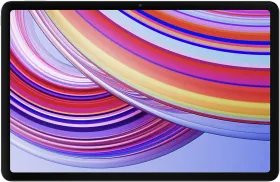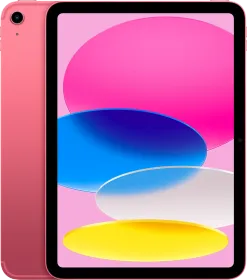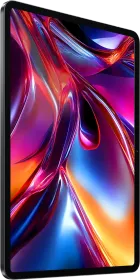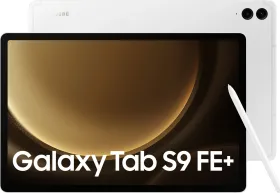Xiaomi has launched its affordable Pad 7 in India. The Tablet has arrived in India at a 30,000 price point and compared to its predecessor Xiaomi Pad 6, it comes with upgrades in various departments. For a price tag of 30k, the Xiaomi Pad 7 is a stylish and slim tablet that comes with a Snapdragon 7 Plus Gen 3 chipset, a massive 8850mAh battery, and a brighter than-before 144Hz smooth display. To enhance creativity capabilities, Xiaomi has added Xiaomi Focus Pen and Keyboard to this Tablet.
The question is whether Xiaomi Pad 7 is a good deal with all these features. To answer this question, let us have a look at our review.
Xiaomi Pad 7 Price & Availability
Xiaomi Pad 7 comes in three storage configurations-
- 8GB RAM+128GB storage-Rs. 27,999
- 12GB RAM+256GB storage-Rs. 30,999
- 12GB RAM+256GB storage (nano texture display)-Rs. 32,999
ICICI bank cardholders will get an Rs. 1000 discount. It comes in Graphite grey, Mirage purple, and Sage Green shades. The Tab will be available from 13th January via Xiaomi’s website, Amazon, and offline stores. The nano texture model will go on sale from 7th Feb.
Pros
- Slim Design
- 3.2K 144Hz display
- Smooth Performance
- Upgraded Fast Charging
- AI Features with HyperOS 2.0
Cons
- No audio jack
- No fingerprint sensor
- Underwhelming camera setup
Xiaomi Pad 7 Review: Unboxing
Xiaomi Pad 7 comes in a white colored cardboard box that features an image of the tab at the front. On opening the box, you will find a pad, 45W charger, charging cable, quick guide, and other important papers.
We have also received the Focus Pen and Keyboard for review. The Focus Pen box includes an additional pen nib and some paper while the keyboard box has a keyboard only. The keyboard works as a tablet cover as well.
Note- Focus Pen and keyboard have to be purchased separately. They aren’t bundled with a tablet.
ALSO SEE: OnePlus 13 Review: The OPPO Find X8’s Doppelganger?
Xiaomi Pad 7 Review: Design
Xiaomi Pad 7 looks exactly like Xiaomi Pad 6. It features a metal unibody design which makes it look premium. The pad has a thickness of 6.5mm and features a flat design with a metal build. The sides are flat as well, with the right edge including a volume rocker and two microphones while the top edge has a speaker and one microphone. The bottom edge has two speakers as well with a Type-C port.

The rear panel features a square camera module on the top-left side. The design of the camera module is similar to Xiaomi’s flagship phones. The module has a thick metal ring on all four sides and on top, it is covered by glass. The tablet also has three pins at the bottom, using which you can attach the tab to the keyboard cover. Alongside the pins, there is a Xiaomi logo as well.
At the front is an 11.2-inch display which looks huge. This time Xiaomi is offering a 3:2 aspect ratio for the display, however, the bezels are thick. The top bezels house punch-hole camera for selfie camera. There is also an LED light which switches on when a selfie camera is used.
The overall design of the Xiaomi Pad 7 is notably premium considering its price range; however, its large size makes it somewhat uncomfortable to hold with both hands. It tends to slip from my grip, but this issue can be mitigated by using a cover that provides improved traction.


I also received a keyboard for testing, which is pretty smooth and works well. The keyboard comes in grey and has a touchpad as well, which responds fast. You can use Focus Pen to perform creative tasks on this tab. The Pen comes in white and features two buttons, which can be used for various actions. The plain side of the pen is a magnet and using it, the pen can be stuck on the tab on the right edge.
Xiaomi Pad 7 Review: Display
Xiaomi Pad 7 features an 11.2-inch LCD screen. It is a 3:2 aspect ratio panel which is slightly larger than previous year’s Pad 6. The bigger screen looks good while you browse social media and read texts on the tab. When you use split screen mode to open two apps on the pad, they are displayed in a 4:3 aspect ratio. This allows you to easily work on both apps. Talking about content streaming, big display doesn’t serve much of a purpose. This is because while watching a video, you will see black bars on top as well as the bottom of the screen.

In comparison to other tablets, the definition of blacks and shaded regions in this model is somewhat lacking. As a result, the blacks do not appear as deep as one might prefer. This is anticipated due to its use of an LCD panel. The contrast is satisfactory, providing good video quality in low-light conditions. While the viewing angles are acceptable, there are instances where the colors appear somewhat washed out.
Compared to the Xiaomi Pad 6’s 2.8K display, this one features a 3.2K panel, which offers finer details and an 8000 nits brightness level. The screen is well-lit indoors and outdoors, but the issue is it gets too reflective outdoors. If you are someone who gets annoyed by the reflective screen, then you can opt for the nano texture variant, which eliminates this problem. However, the Nano Texture Display version is available for high-end storage models as well, which we didn’t receive for review.
For HDR playback the Pad offers Widevine L1 certification support and Dolby Vision. Content consumption experience is decent and four speakers offer acceptable sound output as well.
Xiaomi Pad 7 Review: Speakers
With Dolby Atmos support, there are two speakers at the top and two speakers at the bottom. With these four speakers, the sound output is pretty loud. Sound Settings Menu has two options Atmos and Xiaomi Sound, out of which I liked the Dolby Atmos option better. Also, when you toggle on the Immersive sound option along with Dolby Atmos, the sound of instruments in the background is better.
We watched some shows and streamed some music and considering the price range, the audio quality was loud and decent.
Xiaomi Pad 7 Review: Performance

Xiaomi Pad 7 is powered by Snapdragon 7 Plus Gen 3 chipset and I liked the performance of this SoC. Compared to Snapdragon 870 which powered Pad 6, this one is a decent upgrade. The Snapdragon 7 Plus Gen 3 chipset has similar cores as the Snapdragon 8 Gen 3, but the clock speed is slightly less. Still, the chipset performs well.
The tablet was primarily utilized for content consumption, alongside applications such as Mi Canvas and Mail. We also tested Genshin Impact on this device, and throughout all activities, it delivered quick and seamless performance. There were no noticeable lags or stutters. The tablet handled multitasking efficiently, and impressively, it remained cool even during extended gaming or streaming sessions.
Synthetic Benchmarks



Xiaomi Pad 7 Review: Software
Xiaomi Pad 7 runs HyperOS 2 based on Android 15 and it comes with some AI features onboard. The new Pad from Xiaomi offers quick response while opening or closing apps, switching windows, using simultaneous apps, floating window mode, or more. While using two apps together, one can easily save images they like.
By utilizing NFC technology, it is possible to link a smartphone to a tablet, allowing the tablet’s display to serve as an extended screen for the smartphone. Additionally, users can play games installed on their phones directly on the tablet without the need to download them separately. I have tested both functionalities, and the experience was seamless and quick.
Additional features include Workstation Mode, Call Sync, App Sync, and more.
Xiaomi Pad 7 Review: Camera

Xiaomi Pad 7 comes with one rear and one front camera. At the back is a 13MP sensor and at the front is an 8MP camera. Using the camera at the back, one can click good photos in daylight. The shots have boosted colors, but overall the image quality is decent, and the dynamic range is impressive too. You can’t compare the camera of your smartphone to this sensor, but it takes appropriate images to upload on social media or to scan important documents.




Talking about the selfie camera, this one also works well in daylight. The images clicked look good and have adequate detailing. However as soon as the light gets poor, the image quality drops. Detailing also gets affected. In default mode, the beauty filter of the device is on which tries to make your selfies too good artificially. You can turn it off if you prefer natural shots.

Xiaomi Pad 7 Review: Battery & Charging

There isn’t much of a difference in battery, as compared to Xiaomi Pad 6. However, fast charging speed has improved. The tablet packs an 8850mAh battery with 45W wired fast charging support. With the help of the adapter and cable inside the box, it takes 1 hour and 20 minutes for the tablet to get 100% charged. The speed feels just about ok.
Review Verdict: Should You Buy the Xiaomi Pad 7?
Smartprix Rating: 8/10
Design and Build: 8.5/10
Display: 8/10
Software: 8/10
Speaker & Haptics:8.5/10
Performance: 8.5/10
Cameras: 7/10
Battery Life & Charging:7.5/10
Xiaomi Pad 7 has come with India with a price tag of Rs. 30,000 and compared to Xiaomi Pad 6, this one does incorporate some upgrades. The tablet comes with a 3.2k display with a 144Hz refresh rate which is very smooth. The touch response speed has gotten faster and with the new HyperOS 2.0, optimization and multitasking have gotten better. The Pad has a slim metal design despite having an 8850mAh battery. It looks premium and offers good performance with Snapdragon 7+ Gen 3 SoC.
While the device boasts several impressive features, it does have some limitations. The absence of a 3.5mm headphone jack is notable, and despite the presence of a keyboard, users may still find themselves relying on the touchscreen at times, which can make the keyboard experience feel less than optimal. Additionally, there is no cellular version offered. Nevertheless, for those who do not require calling capabilities on their tablet and are creative individuals seeking a platform to express their talents, as well as for content streaming and gaming, the Xiaomi Pad 7 presents a compelling choice.
First reviewed in January 2025.




































